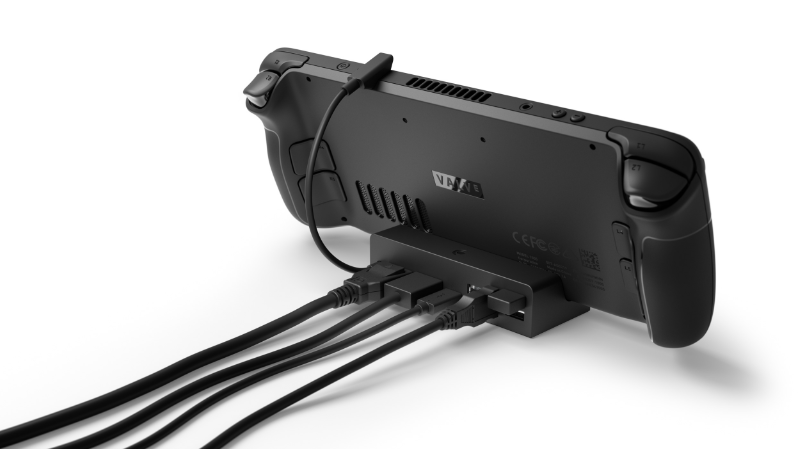The Steam Deck User Interface is Coming to VR Headsets
Virtual reality headsets will soon have Steam Deck’s user interface according to the information contained in a Valve booklet released recently.
The booklet was put together by Valve to mark the availability of Steam Deck in several South East Asian countries including Taiwan, Japan, South Korea, and Hong Kong. The booklet shows the virtual reality headsets that use Steam will “soon” be having Steam Deck’s user interface.

The booklet states that the Steam Deck user interface will soon be available on PCs that are connected to either a TV or in VR.
Currently, most PC-powered virtual reality headsets use Valve’s device-agnostic software platform to access games and settings.
Unlike the Meta Quest headset which sees a monthly release schedule, the SteamVR interface has been evolving gradually. SteamVR last had a major interface update in 2020. In 2021, an update made it possible to pin windows to a controller.
This latest Valve update, perhaps, suggests that another major SteamVR revamp is in the offing for the existing PC-based VR headsets. That big update is also likely to form the basis of Valve’s rumored “Deckard” standalone VR headset.
Various hints, including patents, code findings, and Valve employees’ comments all indicate that Valve could leverage the groundwork it has laid out with Steam Deck for its upcoming standalone virtual reality headset.
The Valve booklet also provides an outline of the company’s history and technologies. The document charts the company’s evolution from a game development company into a major player in the dominant global games marketplace and as a hardware manufacturer. The booklet also outlines the technologies that the company has worked on. It states, for instance, that Proton enables Windows games to be played on Linux-based hardware which has made it possible for some gamers to dump their over-reliance on Microsoft’s Windows.
Valve has also done considerable work in the virtual reality sector which has contributed immensely to the resurgence of the modern consumer market in the VR industry. The company teamed up with Steam in 2016 for Vive which led to the introduction of room-scale hand-controlled virtual reality to consumers, even ahead of Facebook’s Oculus Rift.
In the hardware scene, Valve launched the Valve Index headset which was priced at $1,000 and targeted the high-end consumer market. To date, the PC VR Valve Index headset remains one of the top sellers on Steam. More recently, the company launched the $399 Steam Deck handheld PC.
The Valve also document describes Steam Deck as a “multi-generational product line” and that the company will support it and SteamOS “into the foreseeable future.” The document states that the company plans to learn from the Steam community about new use cases for its hardware, those that Valve is yet to conceive. Valve also says it is planning to develop future hardware versions that will be “more open and capable” than its first Steam Deck version.
Despite its massive impact and considerable revenues, Valve remains a privately-managed company and has only a few hundred employees.
https://virtualrealitytimes.com/2022/08/27/the-steam-deck-user-interface-is-coming-to-vr-headsets/https://virtualrealitytimes.com/wp-content/uploads/2022/08/Steam-Deck-600x338.pnghttps://virtualrealitytimes.com/wp-content/uploads/2022/08/Steam-Deck-150x90.pngBusinessVirtual reality headsets will soon have Steam Deck’s user interface according to the information contained in a Valve booklet released recently. The booklet was put together by Valve to mark the availability of Steam Deck in several South East Asian countries including Taiwan, Japan, South Korea, and Hong Kong. The...Rob GrantRob Grant[email protected]AuthorVirtual Reality Times - Metaverse & VR
